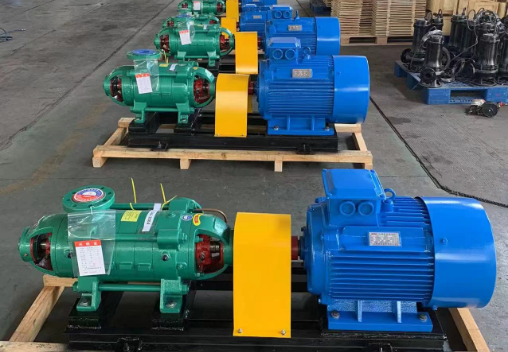Classification of Common Clean Water Pumps
Commonly used clean water pumps are classified in various ways, mainly from the perspectives of structural form, working principle, etc. The following are some common clean water pump classification methods and their characteristics:
1. Classification by structural form
Vertical clean water pump
Features: The pump shaft is perpendicular to the horizontal plane, occupies a small area, and is suitable for occasions with limited space.
Horizontal clean water pump
Features: The pump shaft is parallel to the horizontal plane, the structure is relatively simple, and it is easy to maintain and install.
Single-stage clean water pump
Features: There is only one impeller, which is suitable for occasions with low head.
Multi-stage clean water pump
Features: It has multiple impellers and can provide higher head, which is suitable for occasions where water needs to be transported over long distances.

2. Classification by working principle
Centrifugal clean water pump
Principle: The rotation of the impeller generates centrifugal force in the water, thereby transporting water from low to high.
Features: Simple structure, wide use, and high efficiency.
Self-priming clean water pump
Principle: It has a self-priming function and can automatically absorb water without water diversion.
Features: Suitable for occasions where the water source is relatively fixed and the suction distance is within 3.5 meters, such as well water supply, orchard irrigation, etc. It should be noted that the working efficiency of the self-priming clean water pump is slightly worse than that of other types of water pumps, and it is necessary to add circulating emptying water to complete self-priming when it is put into operation for the first time.
Water-filling clean water pump (also known as water-injection clean water pump)
Principle: Before use, a certain amount of water needs to be manually or automatically injected into the pump to form a sealed environment to start working.
Features: Suitable for occasions where the water source has good water quality but the fluidity of the pipeline is relatively unstable, such as spraying pesticides, irrigation and water supply. The flow rate of the water-filling clean water pump can be adjusted arbitrarily according to needs, and the working efficiency is high. However, it should be noted that the suction pipe should ensure good sealing.
Submersible clean water pump
Principle: The whole machine is put into the water to work, and the water is pushed up through the working axis.
Features: Suitable for occasions with sufficient water source but low head, such as large-volume irrigation of farmland orchards. The advantage of submersible clean water pumps is that they are easy to install and do not require the construction of a pump room; however, the disadvantage is that they are inconvenient to maintain, and because the entire machine is placed in water to work, the motor needs to be specially waterproofed. In addition, valves should not be installed on the outlet pipe of the submersible clean water pump to prevent the motor from burning out due to excessive pump resistance caused by valve closure.
3. Other classification methods
In addition to the above classification methods, clean water pumps can also be classified according to other standards, such as material (such as cast iron, stainless steel, etc.), drive mode (such as electric, diesel engine, etc.), etc.




